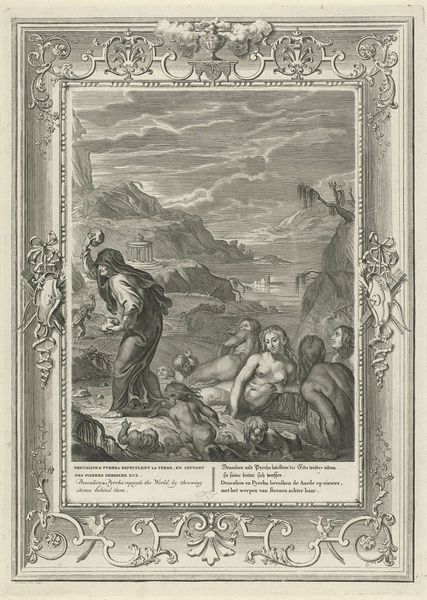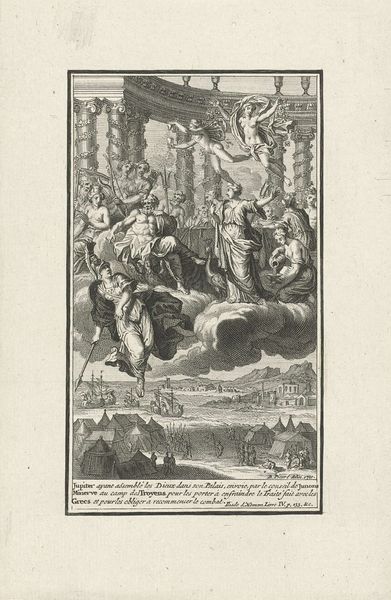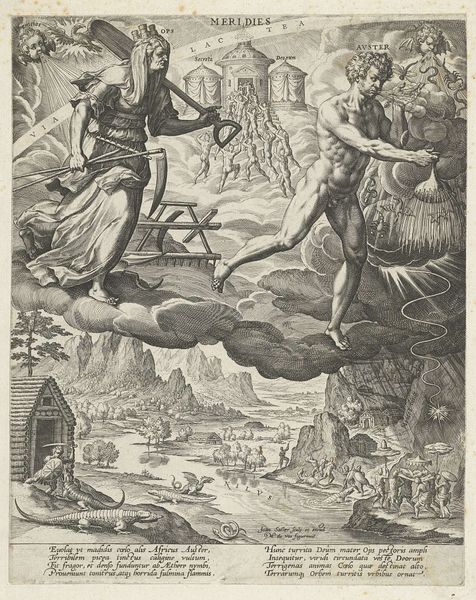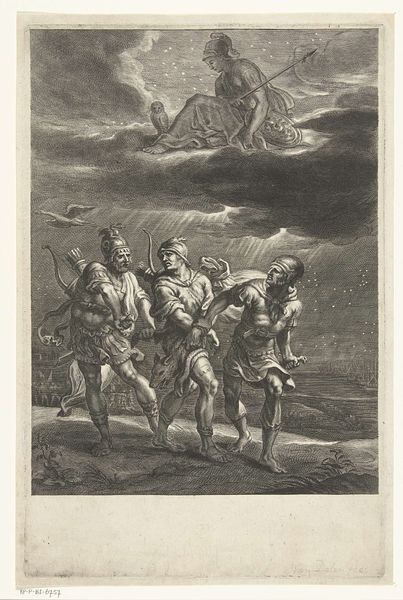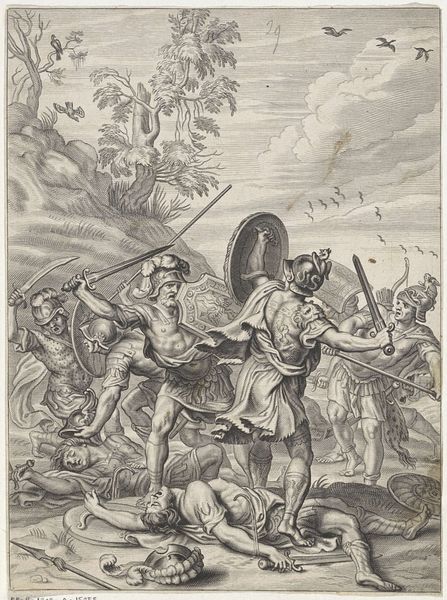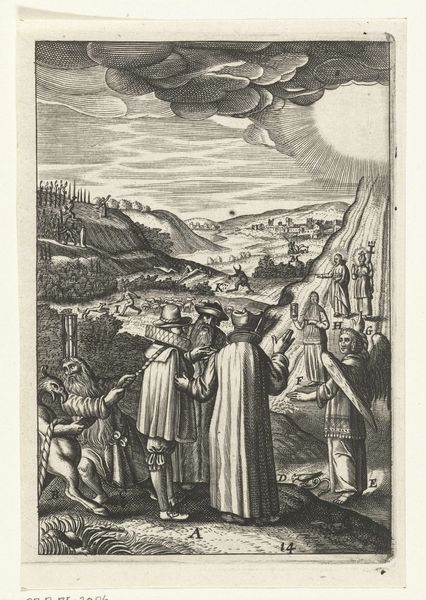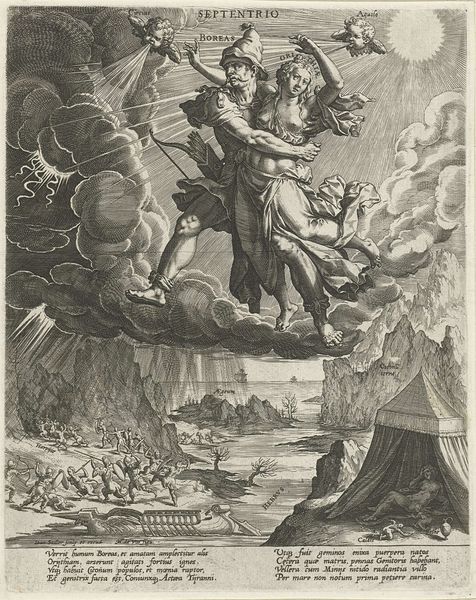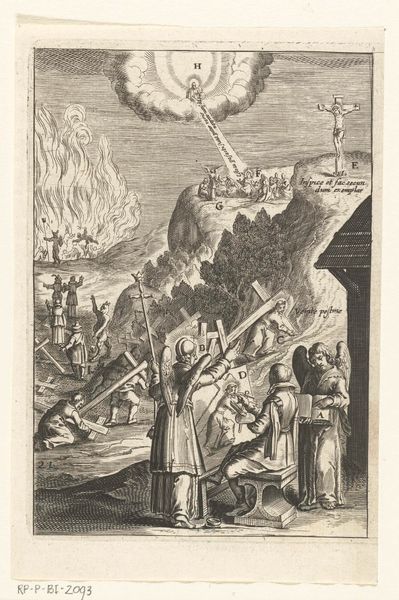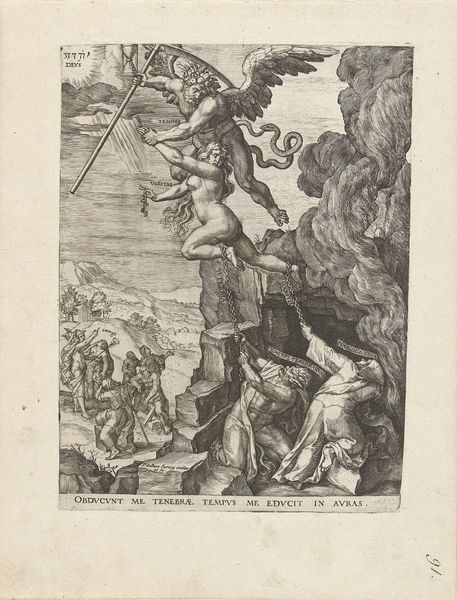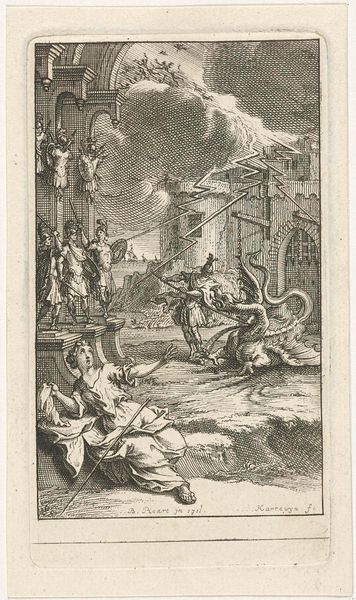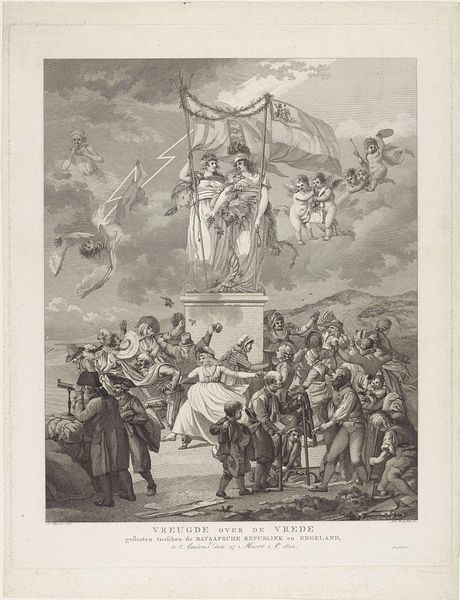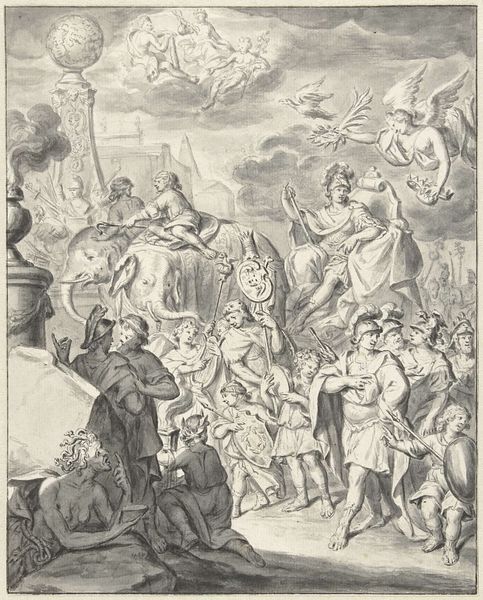
Titelpagina voor La dioptrique oculaire van Chérubin d'Orléans, Parijs 1671 1671
0:00
0:00
gerardedelinck
Rijksmuseum
engraving
#
allegory
#
baroque
#
old engraving style
#
figuration
#
line
#
history-painting
#
engraving
Dimensions: height 321 mm, width 197 mm
Copyright: Rijks Museum: Open Domain
Curator: This title page for "La dioptrique oculaire" by Chérubin d'Orléans, printed in Paris in 1671, certainly presents a striking image. The engraving, created by Gérard Edelinck, is rich with detail and invites a lot of different interpretations. Editor: My first impression is one of grand allegory. It’s a fascinating combination of classical and divine elements—the soaring angels, the figures in classical garb—it’s meant to impress, isn't it? Curator: Absolutely. Baroque imagery was often deployed for maximum impact, linking contemporary intellectual pursuits with a grand narrative. What interests me most is the symbolic weight of sight being explored at that particular time. What do you read in those telescope images, considering the political climate? Editor: It appears they literally envision using telescopic innovation as enlightenment, extending it to diverse peoples: notice the figures on the left representing military power juxtaposed with robed wise men on the right. It's communicating something about vision bridging different cultures and perhaps political viewpoints. And look at that strong verticality emphasized by that centrally located telescope. It unifies heaven, represented by the angels, and the Earth in the bottom register! Curator: Yes, notice how that vertical emphasis plays into older visual tropes associating linear direction with enlightenment, very baroque in its overt messaging. Consider that optical science itself was developing alongside powerful lenses of the church and state during the period; sight became tied to seeing clearly what one *should* see according to political directives. Editor: So you're saying that scientific advancement here is deployed as propaganda through art. If you didn’t understand the scientific nuances, the imagery itself conveys that seeing with this invention reveals some higher truth. Curator: Precisely. It also serves to cement Chérubin d'Orléans’ place within that intellectual lineage by placing his optical work within that symbolic frame. It also tells us something about the patrons and audiences who engaged with scientific works during this time. Editor: It really makes you think about how intertwined science, politics, and art were during the era. Thank you. Curator: My pleasure. I hope that this image sparks curiosity among the viewers about that crucial turning point when scientific seeing merged with ideological visual regimes.
Comments
No comments
Be the first to comment and join the conversation on the ultimate creative platform.
